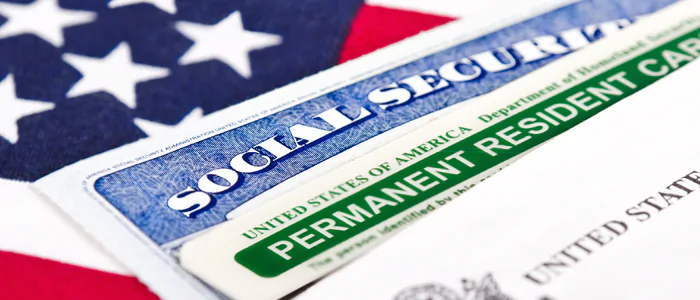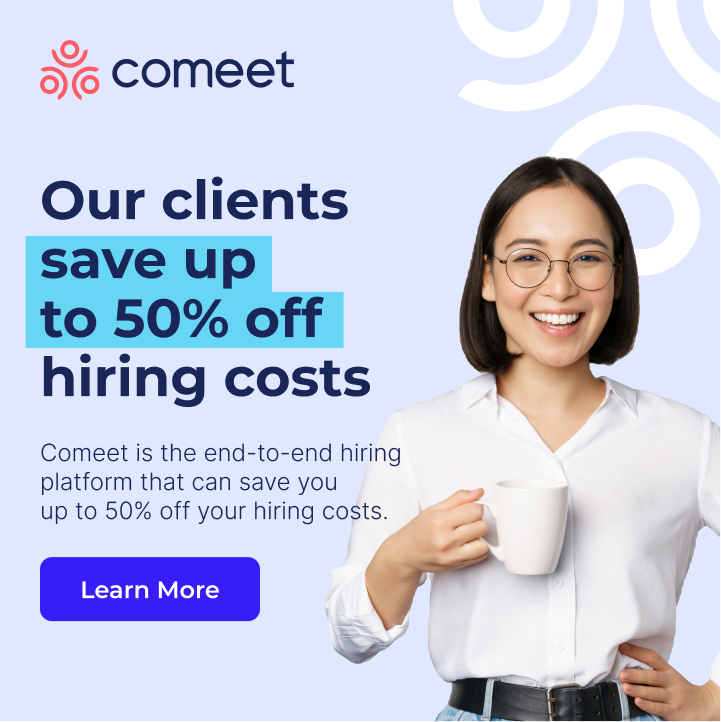Businesses in the U.S. are constantly faced with the challenge of finding qualified candidates to fill skilled positions. The demand for the best talent is fierce and many employers are turning to foreign talent already in the U.S. on a visa.
It’s important for U.S. businesses to acquire the best talent at competitive compensation rates, from within or outside the U.S. Even when unemployment rates in the U.S. are high, many companies report having numerous unfilled positions for skilled talent, especially in tech. Accordingly, employers must be adept at dealing with U.S. visa requirements to recruit and retain talent on a global scale.
Obtaining U.S. work visas is an incredibly complex process. But it is manageable and there are many resources (particularly government sites ) for understanding how it works. Alternatively, hiring current visa holders is less complicated, but there are still many factors to consider, including sponsorship, job changes, and visa status.
There are a variety of circumstances under which employers can engage foreign nationals to work in the United States on a temporary or permanent basis. Foreign nationals who are not citizens, permanent residents or refugees/asylees to the U.S. must first obtain authorization to work in the U.S. pursuant to nonimmigrant or immigrant visas. Nonimmigrant visas confer temporary status and work authorization; immigrant visas grant permanent residency status.
U.S. Employment Sponsorship
If a foreign worker is not already a permanent resident, you will need to file a petition so that the individual may obtain the appropriate immigrant or nonimmigrant classification. You may choose to file an immigrant petition (permanent) or a nonimmigrant petition (temporary) on behalf of that employee.
As an employer (or prospective employer), if you want to sponsor a foreign national to become a permanent resident based on a permanent job offer, you and the foreign national need to go through a multi-step process. In most cases, the process begins when the employer obtains an approved Application for Permanent Labor Certification from the U.S. Department of Labor (DOL).
After the labor certification has been approved by the DOL, the employer continues the process by filing Form I-140, Immigrant Petition for Alien Worker, on behalf of the foreign national with U.S. Citizenship and Immigration Services (USCIS). If prior DOL certification is not required, the sponsoring process will start when you file a Form I-140 with USCIS.
Filing instructions and forms are available on the USCIS website. Sometimes, as outlined below, the foreign national can combine the Form I-140 with a permanent resident application. For information on all of the filing requirements and fees for a labor certification request with DOL, visit the Office of Foreign Labor Certification website.
When Employers Can Hire Visa Holders
According to USCIS, as an employer, you may require the services of a foreign national to work at your company or business. If the individual is already a permanent resident (green card holder), you may hire that individual, but you must comply with the employment verification requirements.
Foreign workers may obtain permanent residence (a green card) if they are able to establish that they have unique skills, or are being offered a job in the United States that will not displace a U.S. worker or have an adverse effect on wages and working conditions of U.S. workers. This determination is made by the Department of Labor (DOL) and is demonstrated by obtaining a “labor certification.”
What is an H-1B Visa?
The H-1B visa is the most commonly sought visa for professional workers. The H-1B classification applies to “specialty occupations.” The job position must require theoretical and practical application of a body of highly specialized knowledge, such as a bachelor’s degree or equivalent experience. Examples of H-1B positions are accountants and computer engineers.
For some visa categories, before the U.S. employer can submit an immigration petition to USCIS, the employer must obtain an approved labor certification from the U.S. DOL. The DOL labor certification verifies the following:
- There are insufficient available, qualified, and willing U.S. workers to fill the position being offered at the prevailing wage
- Hiring a foreign worker will not adversely affect the wages and working conditions of similarly employed U.S. workers
H-1B petitions may be approved for up to three years and can be extended for up to a total of six years. The six-year maximum can be extended if the H-1B visa holder is the beneficiary of a labor certification or a Form I-140 (Petition for Immigrant Worker) filing pending one year or more. Trips outside the U.S. while on H-1B status can also be recaptured to extend the maximum stay on H-1B status.
Permanent Worker Visa Categories in the United States
Permanent worker visas are broken into five preference categories.
- First Preference – EB-1
- Second Preference – EB-2
- Third Preference – EB-3
- Fourth Preference – EB-4
- Fifth Preference – EB-5
For more information on each category, click here.
Generally, the higher the preference category, the shorter the wait time for obtaining an immigrant visa. Due to the per-country quotas, nationals of certain countries or those applying for the lower preferences have to wait years for final processing of their immigrant visas, as they wait for priority dates to become current. For a current list of priority dates, see the U.S. Department of State’s current Visa Bulletin.
Short-term Employment
Employers sometimes need to hire foreign labor when there is a shortage of available U.S. workers to fill certain jobs. Under certain conditions, U.S. immigration law may allow a U.S. employer to file a Form I-129, Petition for a Nonimmigrant Worker, with USCIS on behalf of a prospective foreign national employee.
Upon approval of the petition, the prospective employee may apply for admission to the United States, or for a change of nonimmigrant status while in the United States, to temporarily work or to receive training.
If it appears that an employee may be needed longer than the period for which he or she was approved in his or her current nonimmigrant status, an employer may be able to file a new Form I-129 petition on behalf of the employee.
To avoid disruption of authorized employment, employers are encouraged to file a petition to extend the employee’s status well before it expires. Note, however, that if the employee has already stayed for the maximum allowable period of time, an extension may not be granted.
Sponsorship Quotas and How Soon Visa Holders Can Start Working for a New Employer
Employers sponsoring a job candidate who requires a new H-1B will have to contend with the quota, or “cap” as it is commonly referred to. Currently, the annual cap on H-1B is 65,000 per year with an additional 20,000 for applicants holding advanced U.S. degrees.
In recent years the demand for H-1Bs has greatly exceeded the supply, so USCIS has conducted a “lottery” to select which I-129 petitions, among those submitted in the first week of April, may proceed. In past years, the cap has been reached very quickly, so employers had to wait until the following April 1 to file for an October 1 employment start date. See H-1B Fiscal Year (FY) 2018 Cap Season.
In most cases, the prospective employee will be authorized to start working for you in H-1B status on the effective date of the approved H-1B petition. As noted above, due to the quota, the effective date is often the next October 1.
Recruiting Visa Holders In Summary
Finally, a new policy under the current administration now mandates any H-1B recipient must fill a specific, specialty role. While we went into this at length above, note that for any H-1B visa to be approved, each applicant must be employed in a “specialty occupation,” and the employer agrees to remain in an employer-employee relationship with the visa holder for the duration of the visa’s validity period.
The most salient change in this policy is that companies can no longer hire entry-level “software engineers” en masse from overseas, nor can they shuffle them off to subsidiaries. Similarly, a visa holder can’t use the program to gain entry to the United States, then jump ship to another company once here.
Are you looking to start your hiring process today? Comeet can help. Check out our plan options to learn more about how we can redefine the way you recruit new talent.





























